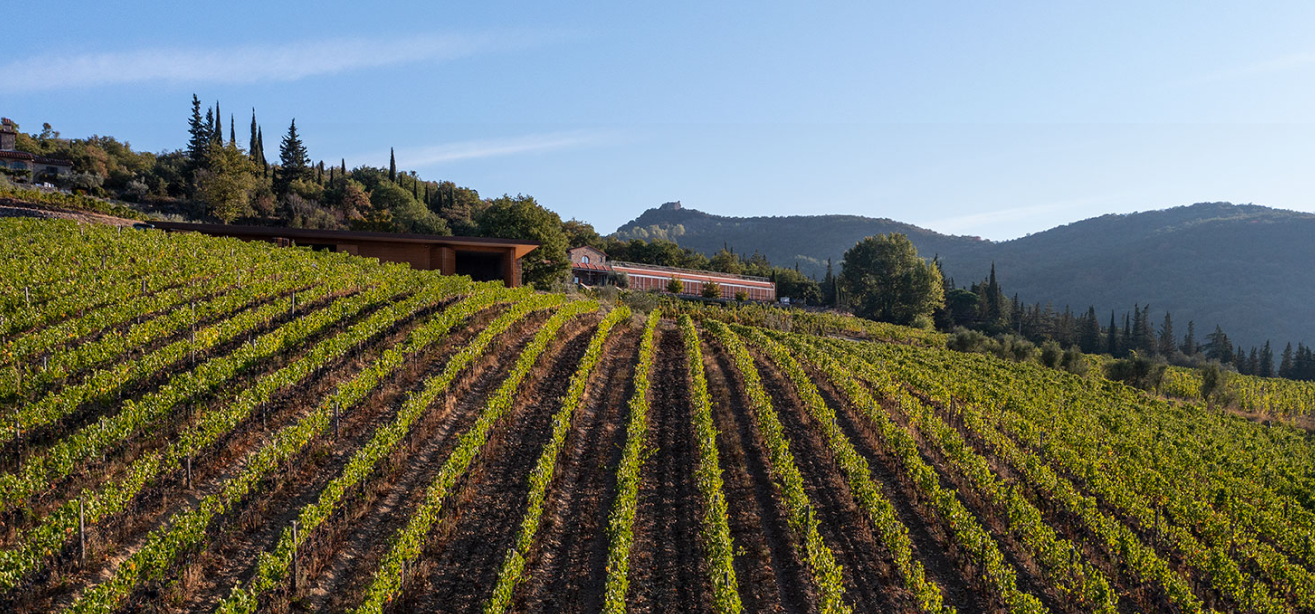
Chapter 3
THE VINEYARDS
“When Baron Philippe de Rothschild plants Sangiovese, I will convert to Cabernet Sauvignon.”
John Dunkley
PALMINA
This is the historic vineyard of Riecine, the one that the Dunkleys discovered on their arrival and which is described in the purchase contract as a ‘low-production hillside vineyard’. Since 1971, it has produced many Riecine wines and since 2010 it has grown the only grapes used in Riecine di Riecine. It is located at an altitude of about 480 metres and has a south/south-eastern aspect. Sangiovese is the only grape variety planted here which has a very low density per hectare, 3×1, and covers just over one hectare. The rootstock is the robust Kober 5BB, which was used extensively at the end of the 1960s. But, by now, the age of the vines means that they are unable to produce more than a kilo of grapes per plant.
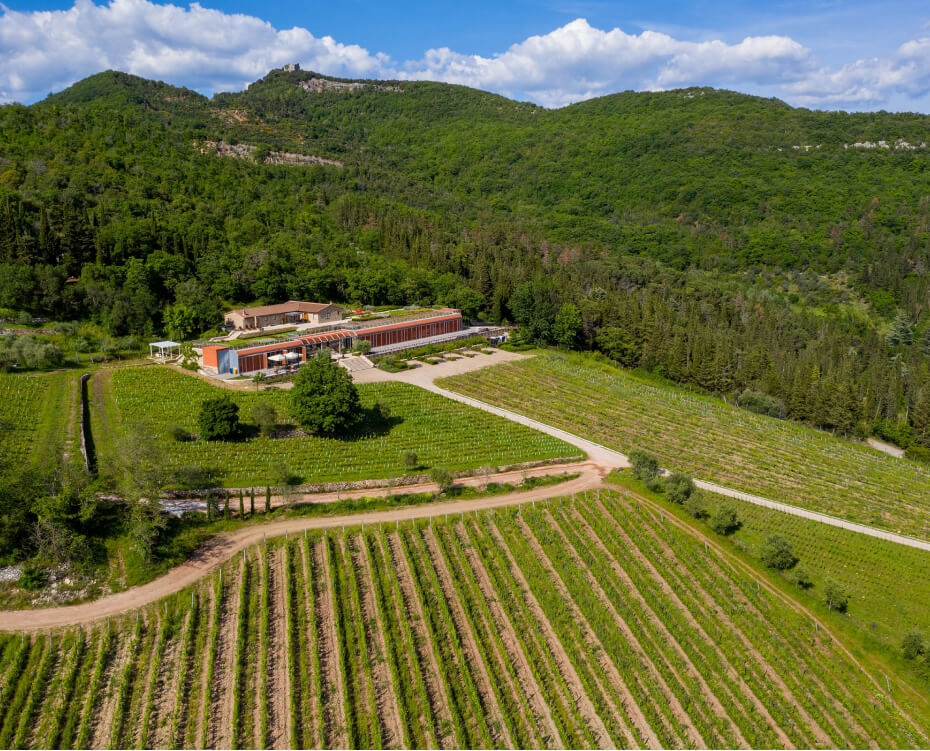
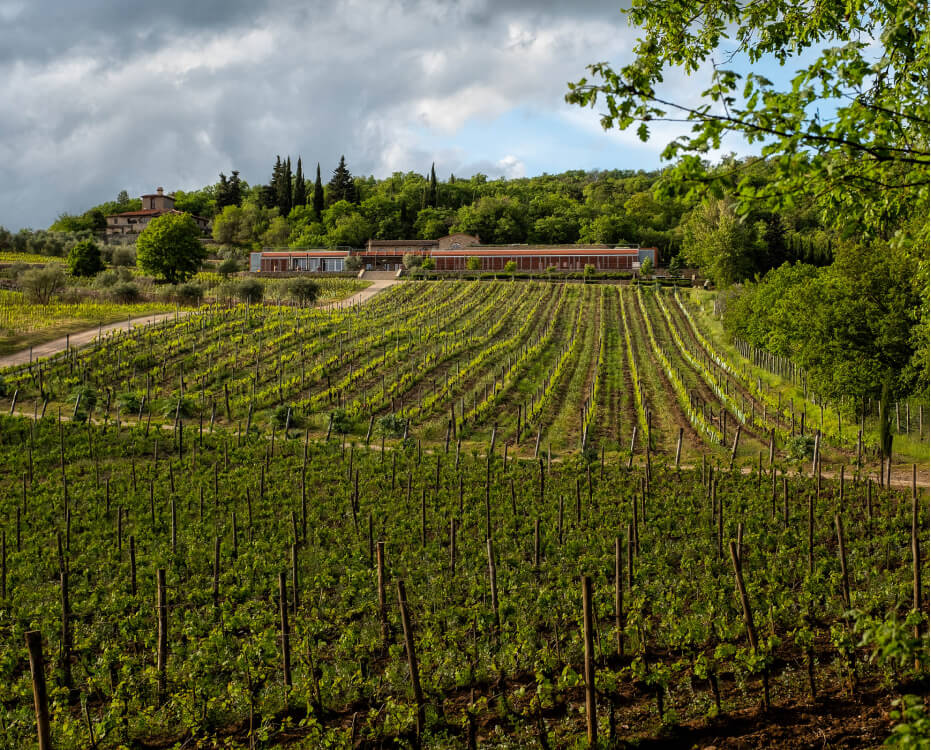
TRABORRI
Where the Palmina vineyard ends, about 30 metres lower down you will find the Traborri vineyard, which is divided into two parts. The first part was replanted in 2001 and produces half Sangiovese and half Merlot varieties; the second, facing south-west, dates back to 2007 and produces Sangiovese grapes only. It is little more than one hectare in total and here, too, the Guyot training system is used. In the past, the vineyard grew both Trebbiano and Malvasia grapes and produced the white wine that Luigi Veronelli was so fond of; now it grows Merlot which is used to produce TreSette.
ALBERELLO
Next to Palmina is a strip of vineyard planted with alberello vines. The lower areas were planted in 2014 by the Frank family, whereas the vines heading up towards the cellar date back to 2001. Naturally, these are the Sangiovese variety. The vines are densely packed together. In the new part, there are almost 9000 plants per hectare, in the older part there are around 8000. These plots can be considered experimental because the oldest sapling was initially pruned based on the guyot system and then later converted. The reason for this is the ongoing fight against climate change: the alberello is the most effective type of training system to protect the grapes from direct sunlight thanks to the natural vegetative ‘umbrella’ that forms in summer. The yields per hectare of these vines are lower than all the others.
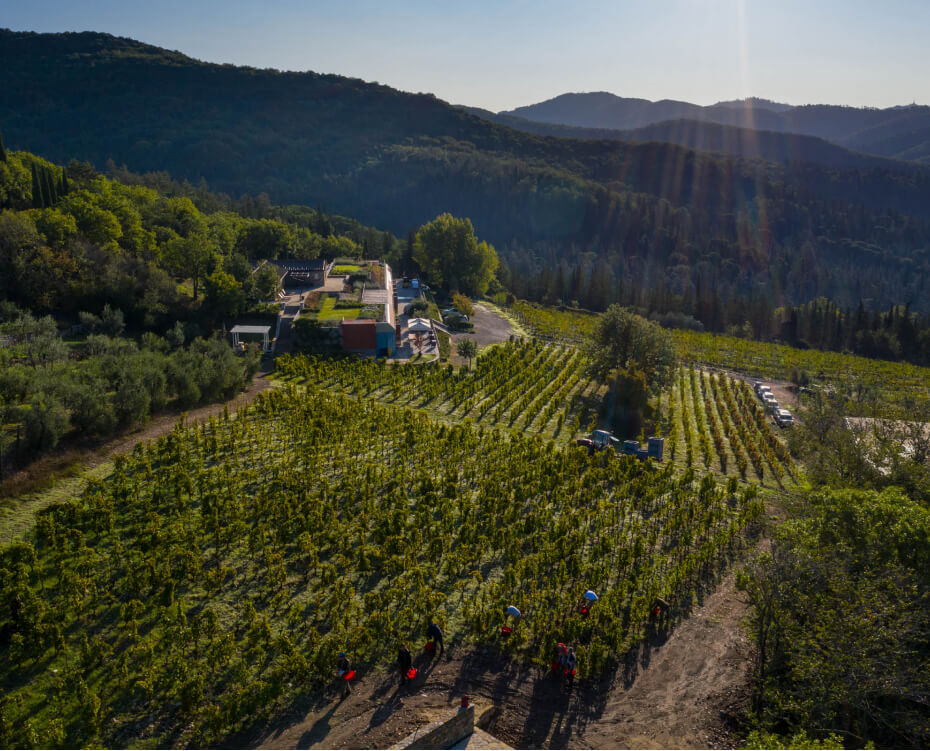
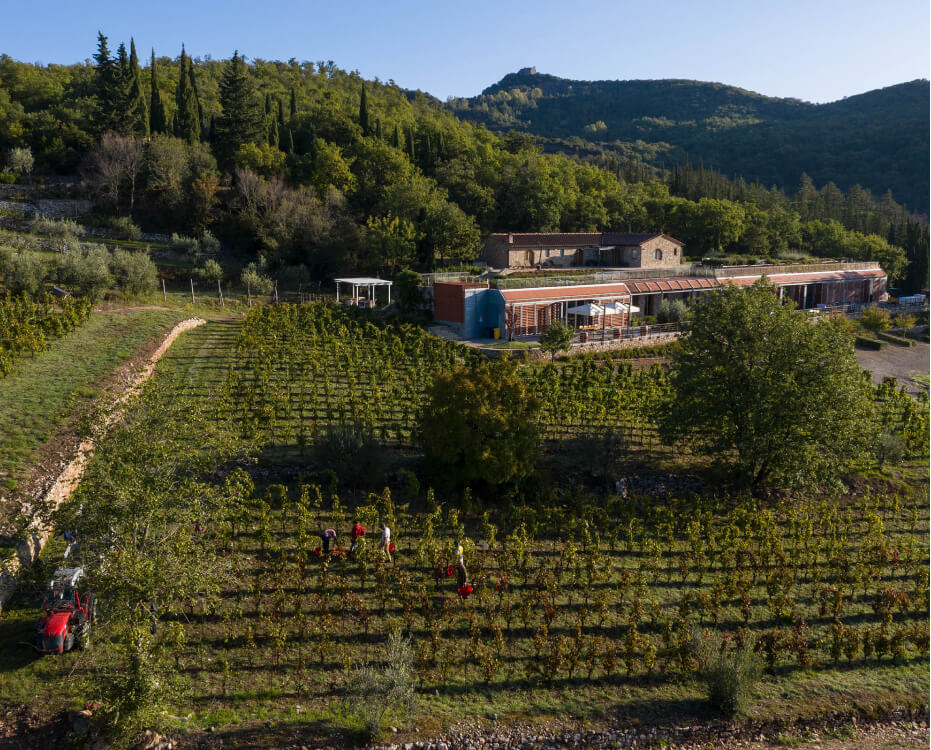
TEODORO
Across from the alberello vines is the new 2-hectare Teodoro vineyard, which was planted in 2014 by Lana and dedicated to her grandson. 100% Sangiovese, with a density of around 6000 plants per hectare, it expands around the hill, initially facing south before ending in the far south-west.
CARLO
The Carlo vineyard, located slightly higher up than the winery, is named after Palmina’s brother. Located in the southern part of the estate, this vineyard was replanted in 2014 together with Teodoro. It is the only vineyard that, in addition to Sangiovese, grows a small percentage of Mammolo. Here too, the density is 6000 plants per hectare.
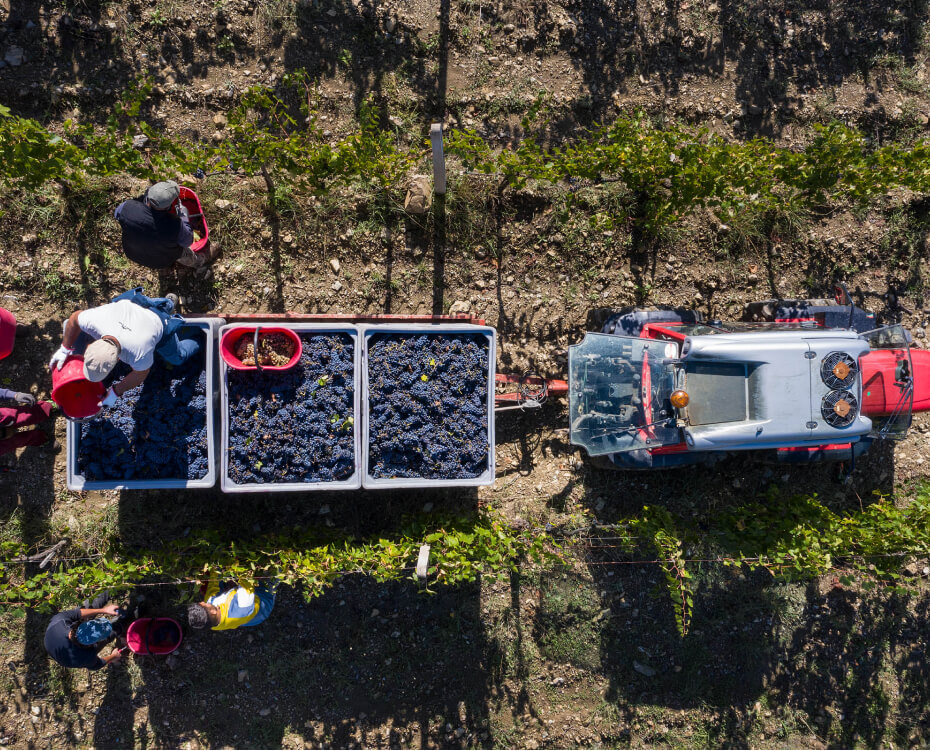
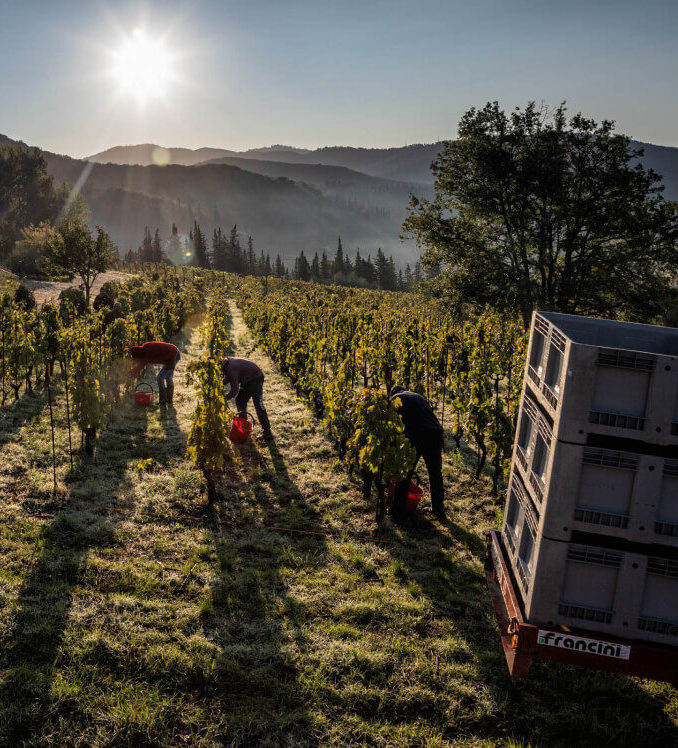
TERRAZZE
This vineyard consisting of half a terraced hectare, as the name suggests, is partially dedicated to Trebbiano and the remainder to Sangiovese.
BOSCO
The name of this vineyard perfectly describes its surroundings: the rows of vines are set in a forest that descends steeply on all sides to an irregular plateau. The vineyard, the only one trained using the cordon system, is about one hectare in size. Planted in 2001 with a density of 5500 plants per hectare and purchased a few years ago by the Frank family, it lies at an altitude of 470 to 450 metres above sea level. Perhaps what is most striking about this corner of Chianti is the forest that surrounds and overlooks everything and the silence that penetrates the soul and intermingles with the aromas of the earth. Take a minute for yourself as you enjoy the natural aromas: in just 60 seconds you will become fully acquainted with the typical scents of the Chianti region.
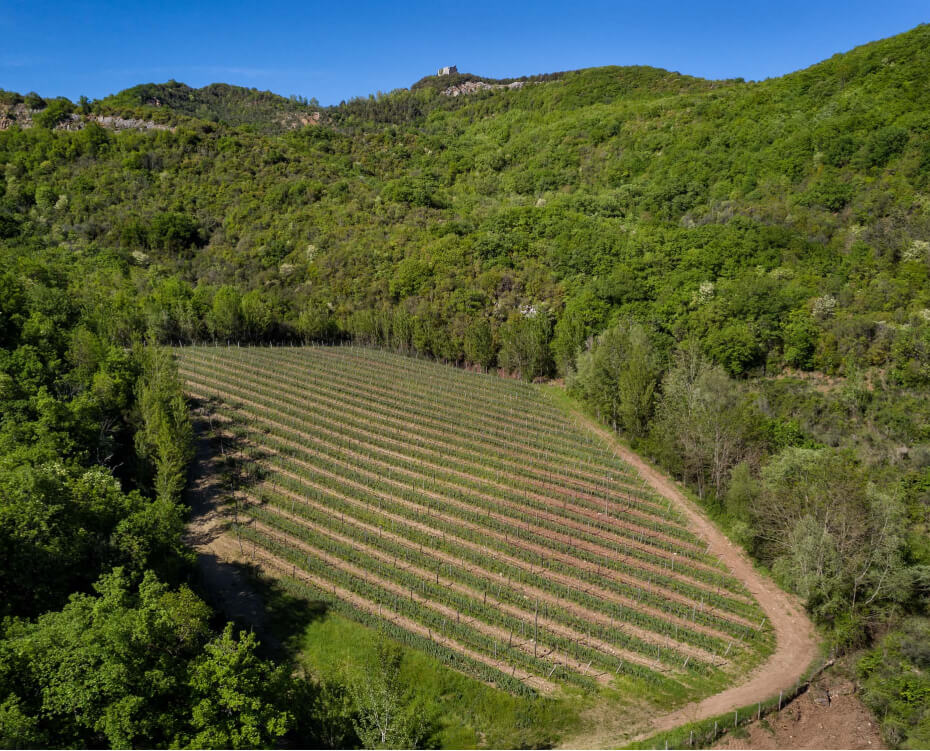
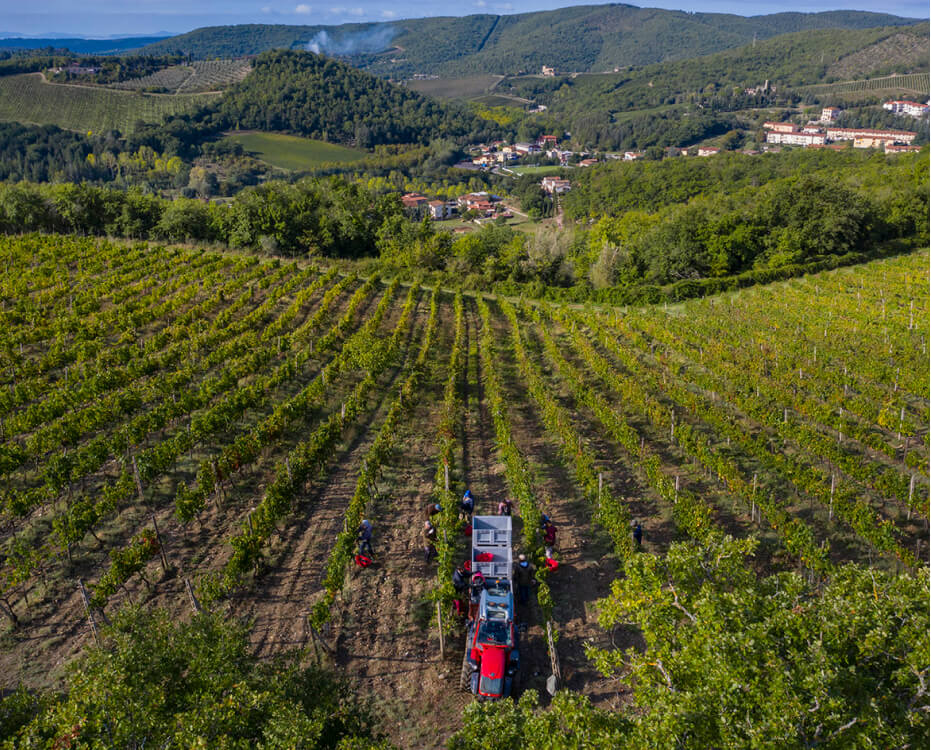
GITTORI
The secluded Bosco vineyard leads to a terrace overlooking the outside world and Chianti Classico. It almost feels as though you can reach out and touch the castles on the horizon, and in the distance the town of Brolio seems to greet you. The succession of vineyards nestled amongst the greenery certainly deserve more than a passing glance. Like the vineyard, the view faces south-west and if you extend your gaze, you might even catch a glimpse of Monte Amiata. After all, the vineyard is around 460 metres above sea level. It is very difficult to define the type of cultivation here. It might look like a spurred cordon, but it is actually more like a cordon ‘adapted’ to the age and evolution of these almost 3 and a half hectares, which were originally leased 25 years ago and acquired in 2019. The planting pattern is typical of the Feoga Plans, 3×1, and dates back to the early 1970s. Lana, Carlo and Alessandro are so enamoured with it that they almost always select these grapes to form the base of La Gioia. Since 2019, the Gittori vineyard has had the honour of being labelled as a cru for Chianti Classico Gran Selezione DOCG.
VERTINE
The Vertine vineyard is located in San Donato in Perano: simply pass through the town of Gaiole and ascend for about three kilometres as you skirt alongside magnificent vineyards and admire the Renaissance-style villas. In the distance, the towers of the village of Vertine magnify the splendour of these lands with their historical importance. This is undoubtedly one of the most beautiful views of Chianti Classico. The Vertine vineyard, spread across almost 2 hectares, is located at 520 metres above sea level and faces south-southwest in a magnificent natural amphitheatre. This was a gift that John Dunkley gave to himself in 1997, once again demonstrating his innate ability to recognise first-class plots. Although similar to Gittori in that only Sangiovese grapes are grown here, one major difference is the constant presence of southerly winds.
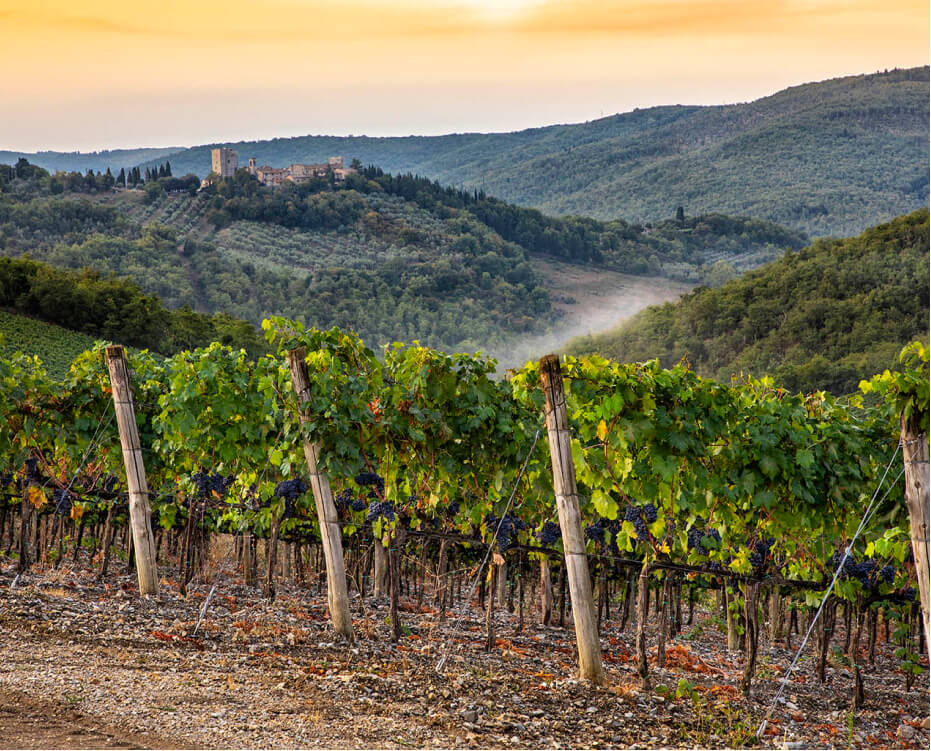
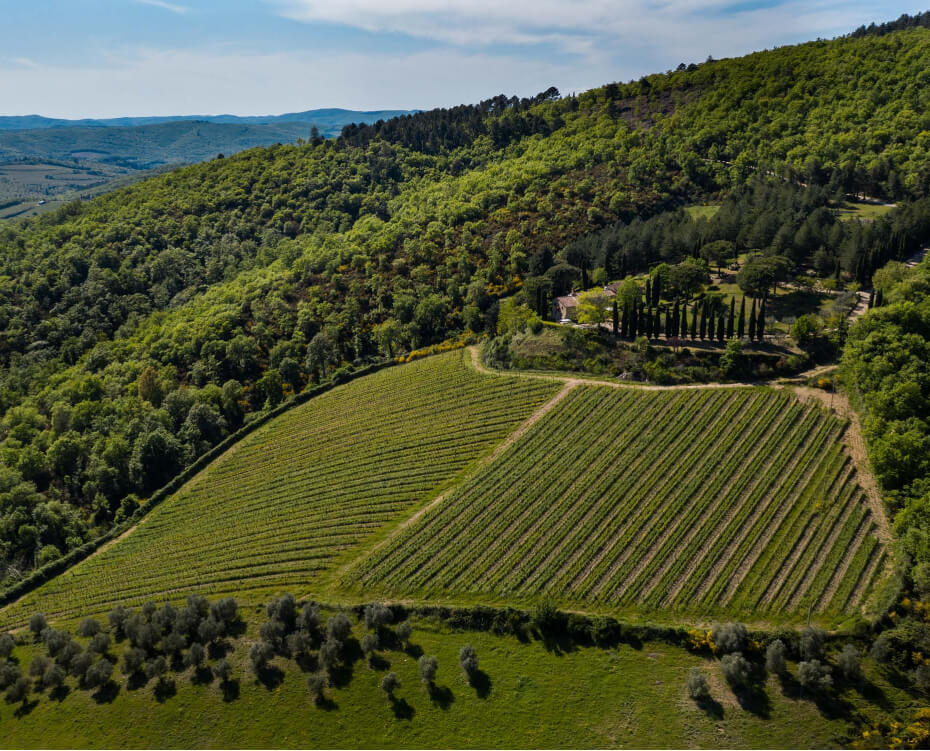
LA CASINA
The route to this vineyard ascends towards Barbischio and then heads past it and onto small white roads that wind through forests of oak, beech and chestnut trees. La Casina is almost 2 hectares in size and is located at an altitude of 550 metres. It is a 20-year-old vineyard, facing south-south-east, with a density of 6350 plants (Sangiovese variety) per hectare. Here, too, the slopes are very steep: you only need to look at the hill opposite where it seems as though the trees are clinging to the ridge, about to roll down into the valley at any second. Its secluded location in relation to the rest of the Riecine vineyards is reflected in the composition of the soil, which is largely made up of sand and loose clay, with a limited presence of Chianti boulder. In this vineyard, harvesting normally takes place after mid-October.
Riecine snc – Località Riecine, 53013 Gaiole in Chianti, Siena, Italy – P.IVA: 00949430524 – Informativa Privacy | Cookie Policy | Smaltimento
 English
English